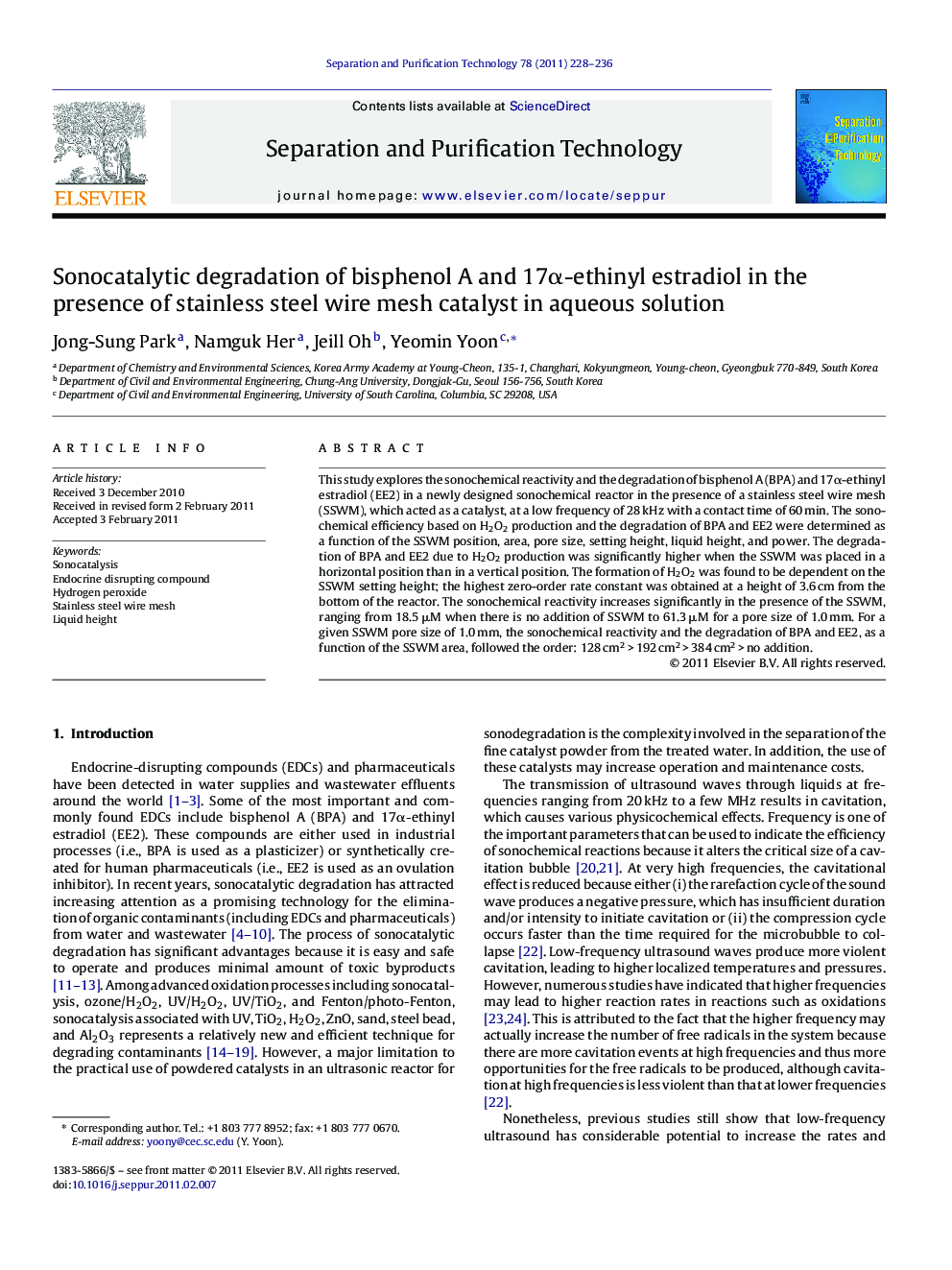| Article ID | Journal | Published Year | Pages | File Type |
|---|---|---|---|---|
| 642730 | Separation and Purification Technology | 2011 | 9 Pages |
This study explores the sonochemical reactivity and the degradation of bisphenol A (BPA) and 17α-ethinyl estradiol (EE2) in a newly designed sonochemical reactor in the presence of a stainless steel wire mesh (SSWM), which acted as a catalyst, at a low frequency of 28 kHz with a contact time of 60 min. The sonochemical efficiency based on H2O2 production and the degradation of BPA and EE2 were determined as a function of the SSWM position, area, pore size, setting height, liquid height, and power. The degradation of BPA and EE2 due to H2O2 production was significantly higher when the SSWM was placed in a horizontal position than in a vertical position. The formation of H2O2 was found to be dependent on the SSWM setting height; the highest zero-order rate constant was obtained at a height of 3.6 cm from the bottom of the reactor. The sonochemical reactivity increases significantly in the presence of the SSWM, ranging from 18.5 μM when there is no addition of SSWM to 61.3 μM for a pore size of 1.0 mm. For a given SSWM pore size of 1.0 mm, the sonochemical reactivity and the degradation of BPA and EE2, as a function of the SSWM area, followed the order: 128 cm2 > 192 cm2 > 384 cm2 > no addition.
Graphical abstractFigure optionsDownload full-size imageDownload as PowerPoint slideResearch highlights► We study the sonochemical degradation of bisphenol A and 17α-ethinyl estradiol. ► We examine a newly designed sonochemical reactor in the presence of a stainless steel wire mesh. ► The sonochemical reactivity increases significantly in the presence of the stainless steel wire mesh.
